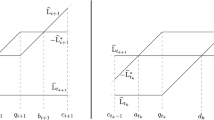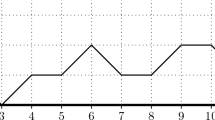In the papers by V. I. Arnold and his successors based upon the ideas of H. Poincaré and F. Klein, it was the Klein sail associated with an operator in ℝn that they considered to play the role of a multidimensional continued fraction, and in these terms generalizations of Lagrange’s theorem on continued fractions were formulated. A different approach to generalization of the notion of continued fraction was based upon modifications of Euclid’s algorithm for constructing, given an irrational vector, an approximating sequence of rational vectors.
We suggest a modification of the Klein sail that is constructed directly from a vector, without any operator. We introduce a numeric characteristic of a Klein sail, its asymptotic anisotropy associated with a one-parameter transformation semigroup of the lattice generating the sail and of its Voronoi cell. In terms of this anisotropy, we hope to give a geometric characterization of irrational vectors worst approximated by rational ones. In the three-dimensional space, we suggest a vector (related to the smallest Pisot–Vijayaraghavan number) that is a candidate for this role. This vector may be called an analog of the golden number, which is the real number worst approximated by rationals in the classical theory of Diophantine approximations.
Similar content being viewed by others
References
A. Ya. Khinchin, Continued Fractions, University of Chicago Press (1964).
V. I. Arnold, Continued Fractions [in Russian], MCCME, Moscow (2001).
E. I. Korkina, “Two-dimensional continued fractions. The simplest examples,” Proc. Steklov Inst. Math., 209, 124–144 (1995).
M. L. Kontsevich and Yu. M. Suhov, “Statistics of Klein polyhedra and multidimensional continued fractions,” in: Pseudoperiodic Topology, Amer. Math. Soc. Transl. Ser. 2, 197, Amer. Math. Soc., Providence, Rhode Island (1999), pp. 9–27.
G. Lachaud, “Voiles et polyèdres de Klein,” Prétirage n°95–22, Laboratoire de Mathématiques Discretes du C.N.R.S (1995).
G. Lachaud, “Sails and Klein polyhedra,” in: Number theory (Tiruchirapalli, 1996), Contemp. Math., 210, Amer. Math. Soc., Providence, Rhode Island (1998), pp. 373–385.
O. N. Karpenkov, “On tori triangulations associated with two-dimensional continued fractions of cubic irrationalities,” Funct. Anal. Appl., 38, No. 2, 102–110 (2004).
O. N. German, “Sails and norm minima of lattices,” Sb. Math., 196, No. 3, 337–365 (2005).
A. J. Brentjes, Multidimensional Continued Fraction Algorithms, Mathematisch Centrum, Amsterdam (1981).
A. D. Bryuno and V. I. Parusnikov, “Comparison of various generalizations of continued fractions,” Math. Notes, 61, 278–286 (1997).
S. M. Bliudze, “Optimal continued fractions,” Master thesis, St. Petersburg State University, St. Petersburg (1998); St. Petersburg Math. Soc. Preprint, 2020-01 (2020).
T. van Ravenstein, “Optimal spacing of points on a circle,” Fibonacci Quart., 27, No. 1, 18–24 (1989).
L. S. Levitov, “Phyllotaxis of flux lattices in layered superconductors,” Phys. Rev. Lett., 66, No. 2, 224–227 (1991).
H. W. Lee and L. S. Levitov, “Universality in phyllotaxis: a mechanical theory,” in: Symmetry in Plants, World Scientific, Singapore (1998), pp. 619–653.
A. A. Lodkin, “Mathematical modelling of phyllotaxis,” in: V-th All-Union School on Theoretical Morphology of Plants [in Russian], Lvov (1987), pp. 59–65.
P. Atela, C. Golé, and S. Hotton, “A dynamical system for plant pattern formation: a rigorous analysis,” J. Nonlinear Sci., 12, No. 6, 1–39 (2002).
A. A. Lodkin, “Klein sail and Dyophantine approximation of a vector,” St. Petersburg Math. Soc. Preprint, 2018-07 (2018).
F. Bergeron and C. Reutenauer, “Golden ratio and phyllotaxis, a clear mathematical link,” J. Math. Biology, 78, No. 1–2, 1–19 (2019).
A. A. Lodkin, “Multidimensional generalization of phyllotaxis,” Cybern. Phys., 8, No. 3, 153–160 (2019).
Author information
Authors and Affiliations
Corresponding author
Additional information
Translated from Zapiski Nauchnykh Seminarov POMI, Vol. 481, 2019, pp. 63–73.
Supported by the RFBR grant No. 17-01-00433.
Translated by A. A. Lodkin.
Rights and permissions
About this article
Cite this article
Lodkin, A.A. Klein Sail and Diophantine Approximation of a Vector. J Math Sci 247, 680–687 (2020). https://doi.org/10.1007/s10958-020-04830-0
Received:
Published:
Issue Date:
DOI: https://doi.org/10.1007/s10958-020-04830-0




